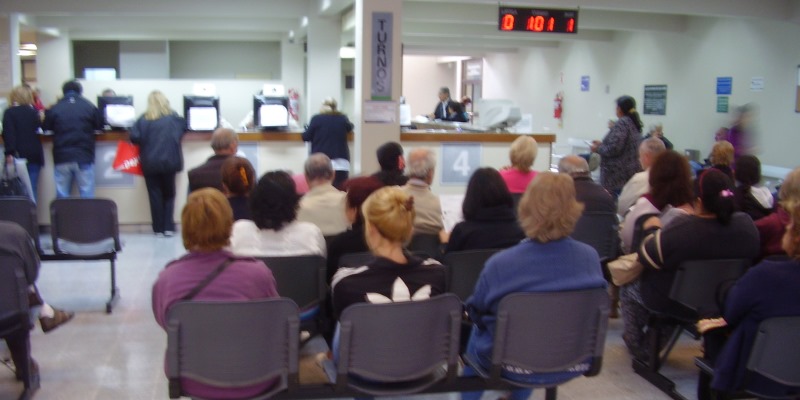More money won’t fix Newfoundland and Labrador health-care system

Newfoundland and Labrador’s health-care system is fundamentally broken—and patients have nowhere else to go. Faced with a severe shortage of physicians, burned-out nurses and overflowing emergency departments, the province’s health-care workers have been sounding the alarm for months. Unfortunately, the solutions being offered so far will only offer temporary relief, if at all.
It’s impossible to discuss health-care challenges in 2021 without first acknowledging the obvious impact of COVID-19. While Newfoundland and Labrador’s current predicament is not the direct result of a surge in COVID patients, it’s certainly exacerbated by the backlog of patients whose surgeries were postponed last year, either by the public health-care systems, or voluntarily to avoid potential infection. Add in the extreme pressure health-care workers have been under over the last year, and you have a recipe for the disaster that is currently playing out.
But we should have seen this coming.
Even before the pandemic struck, Newfoundland and Labrador’s health-care system was struggling to deliver timely care. Patients in the province could be expected to wait a median of 23.4 weeks in order to receive medically necessary elective treatment in 2019. Better than every other Atlantic province, but worse than the national average (20.9 weeks), and probably much longer than patients would prefer to be treated - if they had a choice.
And these waits times were not the result of a lack in funding. In the same year, Newfoundland and Labrador’s government reportedly spent more per-capita on health care ($6,413) than any other province.
Data from the Commonwealth Fund reveal that the province was also struggling with long wait times in the Emergency Department way back in 2016 with 39 per cent of Newfoundlander’s waiting for four hours or more to get treatment—longer than any other province except Quebec, and 3 times the Commonwealth Fund average. Although more recent data from 2020 (for a similar indicator) suggest Newfoundland has moved closer to the Canadian average, both the province and the country as a whole lag far behind their international peers.
The province’s challenges with physicians and hospital beds are a little more complex to unravel.
According to the Canadian Institute of Health Information, Newfoundland and Labrador actually reported the second highest density of physicians in Canada in 2019 (just behind Nova Scotia). The problem is, Canada (as a whole) has far fewer physicians than most other universal health-care systems. In fact, a recent report, using data form 2018, ranked Canada 26th out of 28 in terms of physicians per capita (on an age-adjusted basis). So while Newfoundland and Labrador Health Minister John Haggie considers the province “blessed in terms of numbers per capita” such an enviable ranking within the country is still far behind top international performers like Switzerland and Germany.
International data also helps us better understand the province’s current challenges with the availability of hospital beds. Here we see a similar story. Data from the CIHI indicates that, in 2017, Newfoundland and Labrador actually reported more beds (2.9 per 000 population) than every other province that reported data (Quebec did not) that year except Prince Edward Island. However, data from Canada that same year, when compared internationally, ranked 27th out of 27th in terms of acute care beds per 1,000 population. It’s therefore no surprise that patients are forced to wait for hours in emergency departments or potentially months for medically necessary surgical care.
So what’s to be done?
While policymakers have limited choices in the short-term to alleviate pressure on the public system, the current challenges should serve as a wake-up call to consider longer-term reform. There are solutions with a demonstrable track record in Canada on these issues.
One such program is the Saskatchewan Surgical Initiative. Begun in 2010, Saskatchewan partnered with private clinics to provide publicly-funded surgeries and created a centralized pool for physician referrals. The result was a dramatic increase in capacity, a more efficient referral system that helped cut that province’s average wait times from 26.5 weeks in 2010 to 14.2 weeks in 2014, and the provision of surgeries at a lower cost per procedure when compared to public hospitals—all of which were remarkable achievements by Canadian standards. Provinces such as British Columbia and Quebec also entered limited partnerships with private clinics in order to clear the surgical backlog within the public system last year.
In addition, the province could consider moving to an activity-based funding system for hospitals so that money follows the patient to where it’s needed most. Such an approach is standard-fare in other more successful universal health care systems, does not contravene the Canada Health Act (CHA), and incentivizes hospitals to treat patients instead of turning them away when the budget for daily procedures evaporates.
Unfortunately, more serious reforms that would offer a private option to patients failed by Medicare, or incentives for responsible use of “public resources” such as cost sharing for medical care, would likely incur the wrath of the federal government. This is despite the fact that both of these approaches are standard fare in universal health-care systems such as Switzerland, Germany and the Netherlands, which all have more physicians, nurses, beds and dramatically shorter wait times.
While last year’s pandemic and the resulting backlog could not have been predicted—the long-term implications of surgical program ramp downs, namely long-term backlogs, within an already strained system was. While it may be tempting to blame policymakers who have been largely caught unaware, the reality is that they are scrambling to find a short-term fix to a long-term problem with both hands tied behind their backs.

